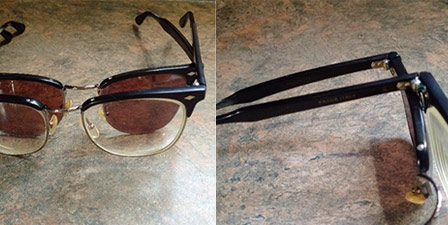
With the greatly increased prevalence of myopia, commonly called nearsightedness, over the last three decades, the federal government should pursue policy changes that would encourage young people to spend more time outdoors, says a new report from the National Academies of Sciences, Engineering, and Medicine. The report also calls for the Centers for Medicare & Medicaid Services to classify myopia as a disease and, therefore, require a medical diagnosis. This reclassification would enable efforts not only to treat blurred vision but also to ensure that stakeholders such as federal and state agencies, professional associations, patients, and caregivers are investing in prevention and management of myopia.
The report recommends between one to two hours outdoors each day for children because studies show that being outdoors stimulates the eye with light that is brighter and more varied and requires different eye movements and focus compared to when indoors. More research is needed to pinpoint the most important factors, but there is unequivocal evidence that increased time outdoors slows excessive eye growth in children and therefore reduces the risk of developing myopia. The report lays out a research agenda aimed at closing research gaps and understanding better the factors that could explain its increasing incidence.
“Myopia is a disease with increasing worldwide prevalence and severity,” said K. Davina Frick, a health economist and professor at the Johns Hopkins Carey Business School, and co-chair of the committee that wrote the report. “Recognition of the impact of its downstream complications on people’s lives beyond nearsightedness needs to be taken seriously.”
The report recommends that the Centers for Disease Control and Prevention produce evidence-based guidelines, supported by federal and state departments of education and health care providers, promoting more time outdoors (at least one hour per day) for children. Further, the National Institutes of Health and other funding agencies should solicit and fund research to investigate the genetic and environmental mechanisms in the development of myopia, and funding agencies should support innovative, multidisciplinary research to identify mechanisms and novel treatments for myopia.
“Collaborative efforts involving health care providers, policymakers, researchers, and funding agencies are essential to tackle this disease effectively,” said Terri L. Young, Peter A. Duehr Professor and chair of the Department of Ophthalmology and Visual Sciences at the University of Wisconsin-Madison, and co-chair of the committee.
Onset and Progression of Myopia
According to the report, important gaps in knowledge exist as to the impact of “near work” (such as reading, with the eyes focused on objects close to the face), both with and without electronic devices, on myopic eye growth. While evidence supports aspects of the “visual diet” affecting eye growth, like the light spectra and contrast of different sources, important details are lacking. Animal models and other scientific research have provided some insights, but more research is needed. Researchers and developers of diagnostic technologies should design improved patient tests to better understand the myopic eye, its development, and the effects of the visual diet.
Identifying Children with Myopia and Access to Treatment
Multiple socioeconomic barriers exist for children’s vision care, such as uneven awareness of the importance of checking children’s eye health, difficulties gaining access to an eye care professional, and barriers to compliance with prescribed treatments. The report includes recommendations that the U.S. Department of Health and Human Services, in collaboration with state departments of education, take measures to ensure that children receive a vision screening before first grade and a comprehensive eye exam when needed. Moreover, an integrated, national data surveillance system is needed for collecting data on vision screening, referrals to eye care providers, demographics (age, race, sex, geographic location), and outcomes of referrals. This data system would enhance care integration and enable monitoring to ensure that follow-up care is received, especially in high-risk populations.
Increasing Standard Data Collection
The report notes that most research on myopia comes from international studies, with limited evidence available in the United States due to a lack of standardized definitions of myopia, irregular and inconsistent screening practices, and the use of varied assessment techniques. There is no consensus for mandatory assessment and diagnostic components of a clinical examination of myopia patients. Diagnostic biomarkers are under development that may improve identification, prognosis, and aid in customized management of myopia.
The report goes on to recommend that the CDC and state health departments collect consistent, harmonized data on the prevalence of myopia in the United States, prioritizing longitudinal surveillance on refractive error prevalence in children using standardized procedures. CDC should also coordinate with the World Health Organization to create consistent definitions and monitoring methods that would benefit the global community.
The study — undertaken by the Committee on Focus on Myopia: Pathogenesis and Rising Incidence — was sponsored by the American Academy of Optometry; American Optometric Association; Health Care Alliance for Patient Safety; Herbert Wertheim School of Optometry & Vision Science, University of California, Berkeley; Johnson & Johnson Vision; National Eye Institute; Reality Labs; Research to Prevent Blindness; and the Warby Parker Impact Foundation.
The National Academies of Sciences, Engineering, and Medicine are private, nonprofit institutions that provide independent, objective analysis and advice to the nation to solve complex problems and inform public policy decisions related to science, engineering, and medicine. They operate under an 1863 congressional charter to the National Academy of Sciences, signed by President Lincoln.












